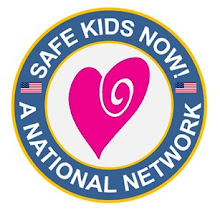For decades, community leaders have perpetuated myths.
Myth #1 Police can keep us safe.
The national average is 2.5 police for every 1000 citizens. The job of police is to react when crimes occur.
Myth #2 Money will solve problems.
Taxpayers spend billions on programs, security, swat teams, training, scanning equipment and surveillance cameras. Money has not stopped gangs, demand for drugs or violence on streets. When an area receives funding, violators move.
Myth #3 Laws control behavior.
Laws have limited power. Law-abiding citizens obey laws. Criminals, gangs, pimps and drug dealers pay little attention.
Myth #4 Racism keeps the community down.
Blaming people who look different perpetuates anger. Anger gives disconnected youth an excuse to be violent. Gangs, like warring tribes, turn youth into uneducated men who end up in prison.
Myth #5 Poverty keeps people from progressing.
Politicians gain power with an illusion of compassion. The on going, “War on Poverty” and “War on Drugs” cost billions. In our zeal to “help” the poor, we can destroy self-confidence and create dependency.
Myths have some truth but they don’t change community behavior.
Crossroads…will security require more surveillance and less freedom or will we focus on supporting neighborhoods and strengthening families?
A national goal: strengthen families.
Children need support to discover their self-protective conscience. When youth have a supportive network of family, friends and church family, they learn they have potential and make responsible choices. Most city youth, do not join gangs, take drugs or become violent but they do need a safe city.
Creating peaceful cities will take:
1. A spiritual awakening to raise children with a conscience.
2. Community participation to build strong neighborhoods.
City leaders can train citizen “community coaches” to work with neighbors to reduce anger and overcome fear. Coaches who speak the language within a neighborhood can educate people so they won’t become victims. Neighbors can stop bullies and destructive behavior at an early age. As people work together, youth see new role models.
Civic and church groups can adopt one block to bring people together and build relationships. They can plan activities; a block party, plant a garden, sponsor a safety fair or prepare for emergencies. Involved neighbors become teachers and mentors.
As community support grows, city residents can heal and cities will become safer for everyone.
Stephanie L. Mann, Crime and Violence Prevention Consultant
Author: “The Adopt-A-Block Guidebook: 10 steps to a safe and healthy neighborhood.”
“Street Safe Kids: 10 step guide to building self-esteem and staying centered.”
www.safekidsnow.com
Friday, May 13, 2011
5 MYTHS - Keeping neighborhoods locked into crime!
Subscribe to:
Post Comments (Atom)





No comments:
Post a Comment